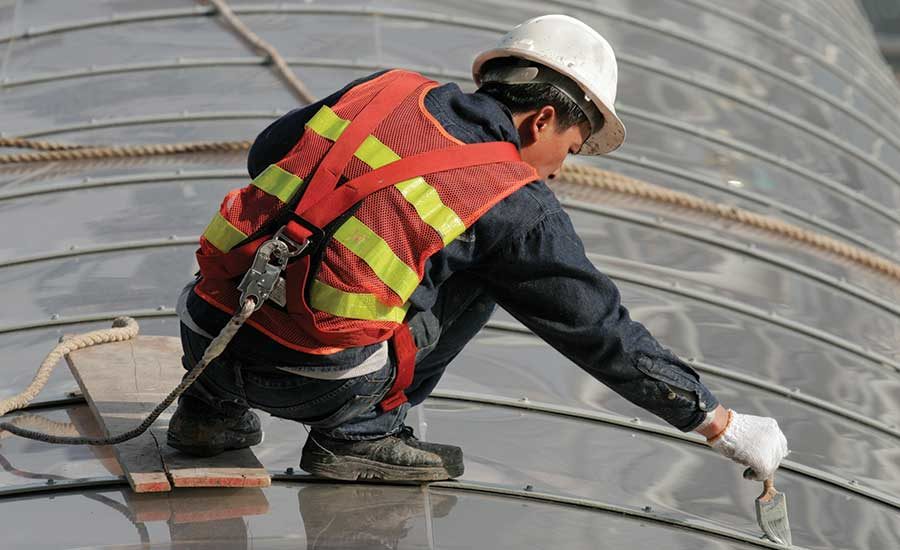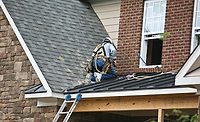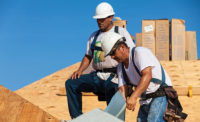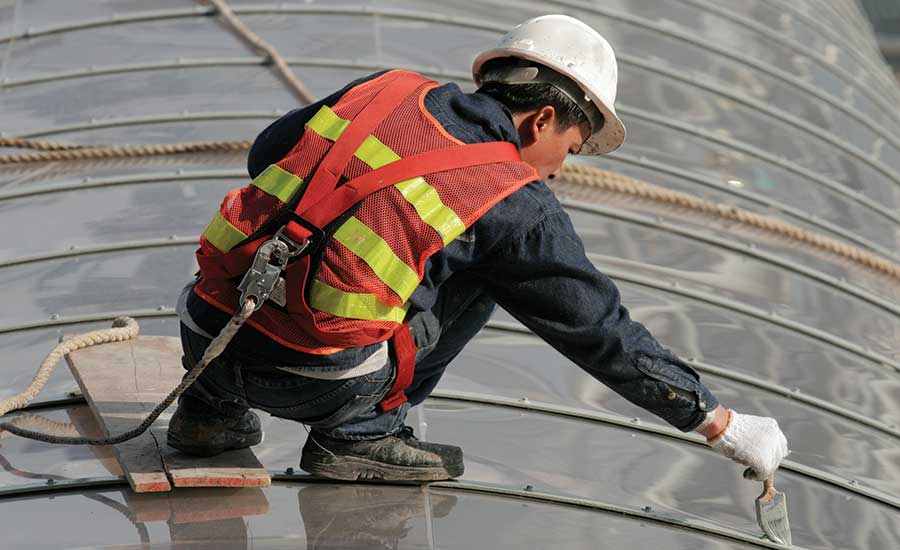Tools for Improved Roof Safety




Safety is an important and complicated issue for every roofing contractor. Effective safety programs involve a complex combination of careful project planning, effective employee training, and constant job monitoring to assure long-term success. But even though achieving safety is a complex process, there are many simple tools available that can make a significant contribution to your company’s safety program. Using some or all of the tools discussed in this column may not only help your crews avoid unnecessary injuries, but each of these tools will provide tangible evidence of your firm’s commitment to providing a safe and productive workplace.
Ladder anchors and brackets.
The first step in setting up any ladder involves the solid anchorage of the ladder to the edge of the roof or building. Fortunately, a wide variety of inexpensive anchorage devices are available, allowing secure attachment to parapets, gutters, roof edges and other acceptable points of attachment.
Ladder angle tools.
OSHA regulations call for a very specific ratio of vertical height to horizontal, which results in a 75.5 degree slope for the ladder. Instead of estimating this ratio at the jobsite, your crews can use a ladder angle level that attaches to the side of the ladder.
Ladder stabilizers and levelers.
In addition to anchoring the ladder at the top and assuring that the slope of the ladder is OSHA-compliant, it’s important to make sure that the base of the ladder is both level and secure. Simple levelers attached to the feet of the ladder can compensate for surface irregularities, and a wide variety of stabilizer attachments can help assure sound anchorage.
Ladder extenders.
Ladders should extend at least 3 feet above the roof edge; but even when the ladder is placed to meet this requirement, it can be difficult to step on or off the ladder due to the interference of the extended ladder rungs. Ladder extenders make this easier by providing the necessary 3 foot extension without blocking access to or egress from the top rung of the ladder. Ladder extensions also provide hand holds that may be easier to reach and hold as compared to the ladder rails.
Grippers, wrist savers and lifting straps.
Many roofing projects involve the installation of heavy 4’ x 8’ sheets of plywood, OSB board, and gypsum board. Within the last few years, a number of affordable tools have been developed to allow workers to lift and carry these unwieldy panels with minimal strain and risk. Similar lifting tools are available for carrying heavy boxes of roofing fasteners and other accessories.
One of the best ways to incorporate more of these simple and effective safety tools into your company’s safety program starts here in the May 2017 issue of Roofing Contractor. This month, a wide variety of roof safety equipment and solutions are highlighted, and I hope you’ll take some time to review these new products and decide how they can help you strengthen your employee safety program.
Looking for a reprint of this article?
From high-res PDFs to custom plaques, order your copy today!








